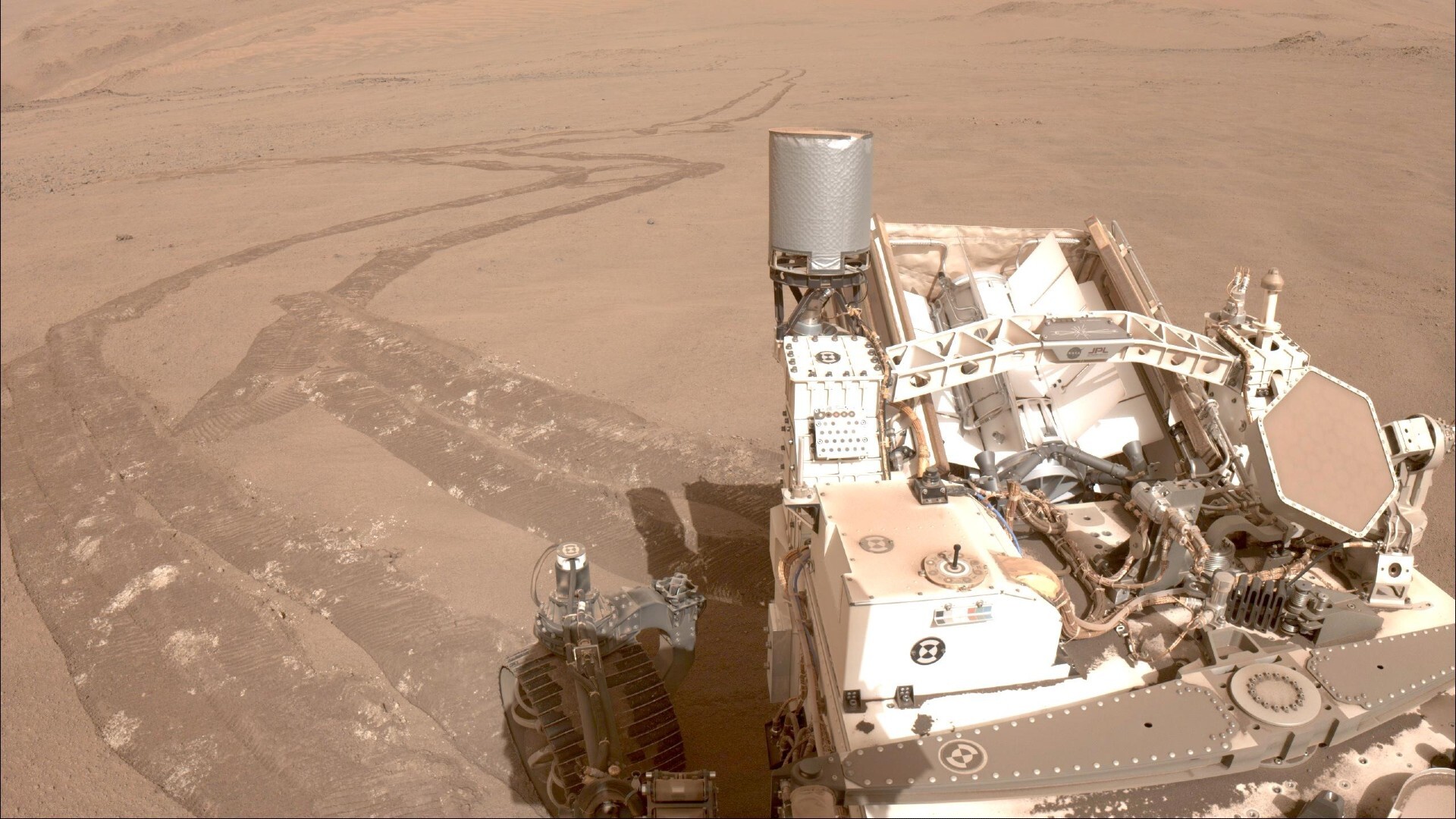NASA Probe to Dive Through Saturn Moon's Icy Plume Wednesday

Scientists are about to get their best look ever at the ocean that sloshes beneath the surface of Saturn's icy moon Enceladus.
On Wednesday (Oct. 28), NASA's Cassini spacecraft will zoom just 30 miles (50 kilometers) above Enceladus, flying through and sampling the plume of material that erupts from the satellite's south polar region.
This plume is thought to originate from Enceladus' underground liquid-water ocean, so Cassini's onboard sample analysis should shed light on the moon's potential to host life, mission team members said. [Watch how Cassini will sail through Enceladus' icy plumes]
"On Wednesday, we will plunge deeper into the magnificent plume coming from the south pole than we ever have before, and we will collect the best samples ever from an ocean beyond Earth," Curt Niebur, Cassini program scientist at NASA Headquarters in Washington, D.C., said during a news conference today (Oct. 26).
Cassini is not equipped to search for signs of life, but the probe's measurements should help researchers assess the habitability of Enceladus' global ocean, Niebur added.
There are three main science objectives for the flyby, said Cassini project scientist Linda Spilker, who's based at NASA's Jet Propulsion Laboratory in Pasadena, California: The mission team aims to confirm the presence of molecular hydrogen in the plume, which would provide evidence for hydrothermal activity (a potential energy source for life) in the ocean. The team also hopes to characterize the plume's chemistry (perhaps finding previously undetected organic compounds) and determine the nature of the plume sources (discrete jets versus broader, curtainlike eruptions).
The flyby will occur at about 1 p.m. EDT (1700 GMT) Wednesday. Cassini will check in with mission control about 3 hours later, but the first encounter images likely won't be released until late Thursday or early Friday, Spilker said.
Breaking space news, the latest updates on rocket launches, skywatching events and more!
Scientists will probably get their first quick look at Cassini's spectrometer data on the sampled plume particles within a week after the flyby, but more in-depth analysis may take several weeks, she added.
Wednesday's close encounter will mark the 21st flyby of Enceladus for Cassini, which has been orbiting Saturn since 2004 and discovered the moon's icy geysers in 2005. Cassini has flown through the plume before, but its previous closest approach to the south polar region was 50 miles (80 km).
So Wednesday's event is pretty special, Spilker said.
"There's a lot of excitement about this particular flyby," she said. "We're certainly all eagerly awaiting the scientific results from this deep plunge through the plume."
After Wednesday, Cassini will have one more flyby of Enceladus remaining before the end of its mission, in September 2017. On Dec. 19 of this year, the spacecraft will cruise within 3,106 miles (4,999 km) of the icy satellite, making observations that should allow mission scientists to gauge the heat flowing from Enceladus' interior.
The $3.2 billion Cassini mission, a joint effort involving NASA, the European Space Agency and the Italian Space Agency, launched in 1997.
Follow Mike Wall on Twitter @michaeldwall and Google+. Follow us @Spacedotcom, Facebook or Google+. Originally published on Space.com.

Michael Wall is a Senior Space Writer with Space.com and joined the team in 2010. He primarily covers exoplanets, spaceflight and military space, but has been known to dabble in the space art beat. His book about the search for alien life, "Out There," was published on Nov. 13, 2018. Before becoming a science writer, Michael worked as a herpetologist and wildlife biologist. He has a Ph.D. in evolutionary biology from the University of Sydney, Australia, a bachelor's degree from the University of Arizona, and a graduate certificate in science writing from the University of California, Santa Cruz. To find out what his latest project is, you can follow Michael on Twitter.

